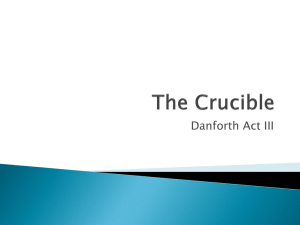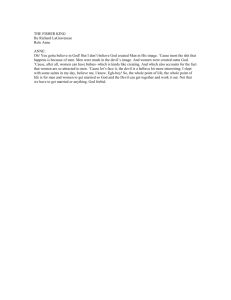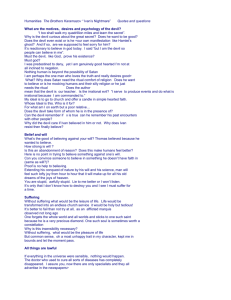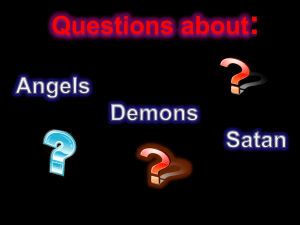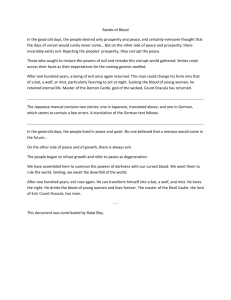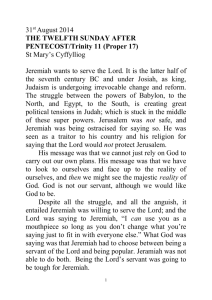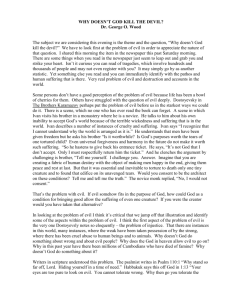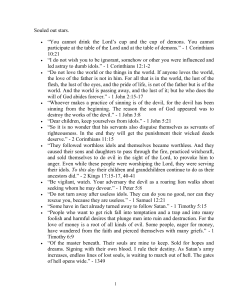Do demons and evil spirits really exist
advertisement
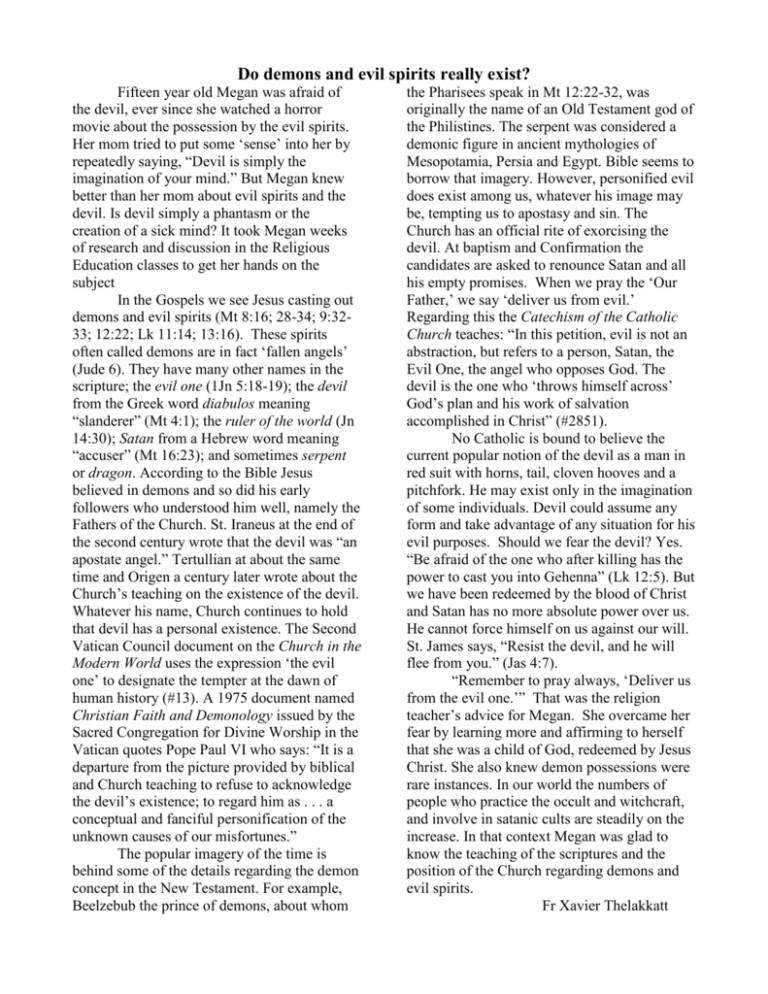
Do demons and evil spirits really exist? Fifteen year old Megan was afraid of the devil, ever since she watched a horror movie about the possession by the evil spirits. Her mom tried to put some ‘sense’ into her by repeatedly saying, “Devil is simply the imagination of your mind.” But Megan knew better than her mom about evil spirits and the devil. Is devil simply a phantasm or the creation of a sick mind? It took Megan weeks of research and discussion in the Religious Education classes to get her hands on the subject In the Gospels we see Jesus casting out demons and evil spirits (Mt 8:16; 28-34; 9:3233; 12:22; Lk 11:14; 13:16). These spirits often called demons are in fact ‘fallen angels’ (Jude 6). They have many other names in the scripture; the evil one (1Jn 5:18-19); the devil from the Greek word diabulos meaning “slanderer” (Mt 4:1); the ruler of the world (Jn 14:30); Satan from a Hebrew word meaning “accuser” (Mt 16:23); and sometimes serpent or dragon. According to the Bible Jesus believed in demons and so did his early followers who understood him well, namely the Fathers of the Church. St. Iraneus at the end of the second century wrote that the devil was “an apostate angel.” Tertullian at about the same time and Origen a century later wrote about the Church’s teaching on the existence of the devil. Whatever his name, Church continues to hold that devil has a personal existence. The Second Vatican Council document on the Church in the Modern World uses the expression ‘the evil one’ to designate the tempter at the dawn of human history (#13). A 1975 document named Christian Faith and Demonology issued by the Sacred Congregation for Divine Worship in the Vatican quotes Pope Paul VI who says: “It is a departure from the picture provided by biblical and Church teaching to refuse to acknowledge the devil’s existence; to regard him as . . . a conceptual and fanciful personification of the unknown causes of our misfortunes.” The popular imagery of the time is behind some of the details regarding the demon concept in the New Testament. For example, Beelzebub the prince of demons, about whom the Pharisees speak in Mt 12:22-32, was originally the name of an Old Testament god of the Philistines. The serpent was considered a demonic figure in ancient mythologies of Mesopotamia, Persia and Egypt. Bible seems to borrow that imagery. However, personified evil does exist among us, whatever his image may be, tempting us to apostasy and sin. The Church has an official rite of exorcising the devil. At baptism and Confirmation the candidates are asked to renounce Satan and all his empty promises. When we pray the ‘Our Father,’ we say ‘deliver us from evil.’ Regarding this the Catechism of the Catholic Church teaches: “In this petition, evil is not an abstraction, but refers to a person, Satan, the Evil One, the angel who opposes God. The devil is the one who ‘throws himself across’ God’s plan and his work of salvation accomplished in Christ” (#2851). No Catholic is bound to believe the current popular notion of the devil as a man in red suit with horns, tail, cloven hooves and a pitchfork. He may exist only in the imagination of some individuals. Devil could assume any form and take advantage of any situation for his evil purposes. Should we fear the devil? Yes. “Be afraid of the one who after killing has the power to cast you into Gehenna” (Lk 12:5). But we have been redeemed by the blood of Christ and Satan has no more absolute power over us. He cannot force himself on us against our will. St. James says, “Resist the devil, and he will flee from you.” (Jas 4:7). “Remember to pray always, ‘Deliver us from the evil one.’” That was the religion teacher’s advice for Megan. She overcame her fear by learning more and affirming to herself that she was a child of God, redeemed by Jesus Christ. She also knew demon possessions were rare instances. In our world the numbers of people who practice the occult and witchcraft, and involve in satanic cults are steadily on the increase. In that context Megan was glad to know the teaching of the scriptures and the position of the Church regarding demons and evil spirits. Fr Xavier Thelakkatt
